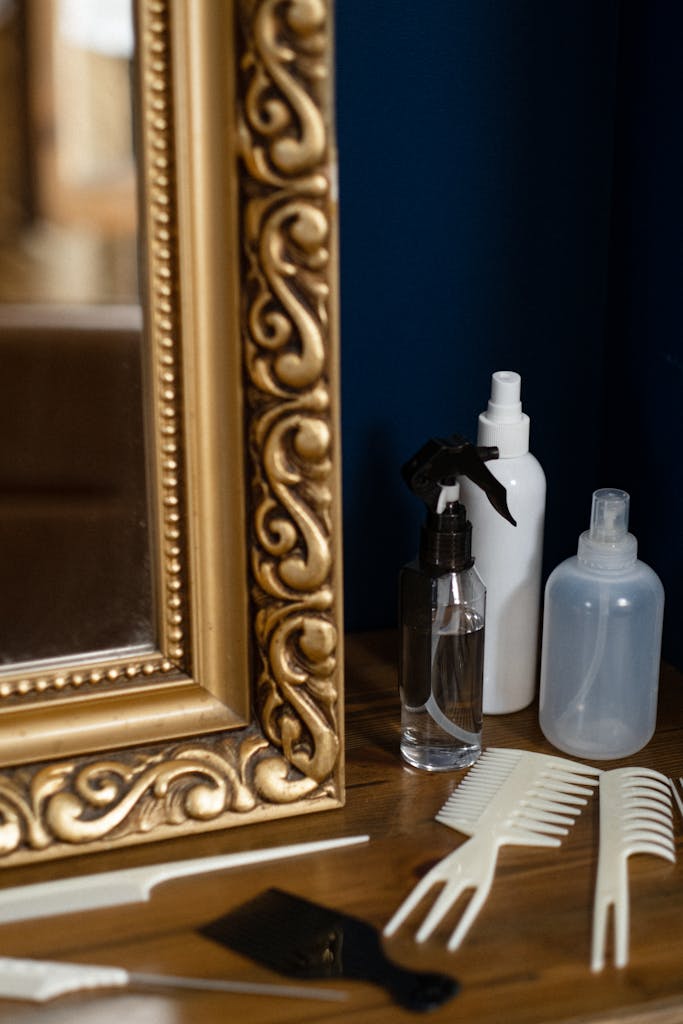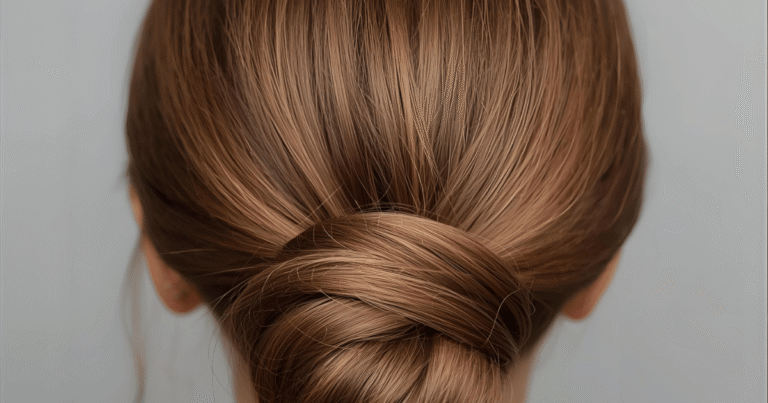5 Easy Twist Hairstyles for Girls: Classic Updos That Stay Put
There’s something undeniably elegant about twisted hair.
Unlike braids, which require dividing hair into multiple sections and following a specific pattern, twists are forgiving. Unlike buns, which can look severe or overly casual depending on execution, twists strike a perfect balance between polished and approachable. And unlike elaborate updos that require professional training (or at least a YouTube tutorial and forty-five minutes of frustration), most twist styles can be mastered in an afternoon.
The twist has been a staple of women’s hairstyling for centuries. From the Gibson Girls of the early 1900s to Hollywood’s golden age, from European royalty to modern runways, the twist has never truly gone out of style. There’s a reason for that: it works. On thick hair and fine hair. On straight hair and curly hair. On women and girls of every age.
If you’ve never ventured beyond the basic ponytail, consider this your invitation to try something new. These five twist styles range from beginner-friendly to slightly more advanced, but all are achievable with practice. And once you’ve mastered them, you’ll wonder why you ever did anything else.

Before You Begin: Setting Up for Success
A few general tips that apply to all twist styles:
Work with day-old hair. Freshly washed hair tends to be slippery and harder to control. Hair that’s a day or two past washing has more grip and holds styles better. If you must work with clean hair, a light application of texturizing spray or dry shampoo adds the grip you need.
Gather your tools. Before you begin, have everything within reach: a good brush, a fine-tooth comb (for smoothing), bobby pins that match her hair color, a few small clear elastics, and any accessories you plan to use. Nothing derails a styling session like stopping to hunt for supplies.
Secure properly. The key to twists that last is proper pinning. Always insert bobby pins wavy-side down (the bumpy side against the scalp) for maximum grip. Use more pins than you think you need. Cross them in an X pattern for extra security.
Practice first. Try any new style on a relaxed day, not the morning of an important event. The first attempt is always a learning experience. By the third or fourth try, you’ll have it down.
Now, let’s twist.

Style 1: The Classic French Twist
Best for: Church, special occasions, formal events, ages 7 and up Difficulty: Moderate Time: 10-15 minutes once mastered Works with: Medium to long hair; all textures
The French twist is the grande dame of twisted updos. It’s sophisticated, timeless, and surprisingly secure once you get the technique down. This style keeps hair completely off the neck and face, making it perfect for warm weather or occasions when a polished appearance matters.
Step-by-Step Tutorial:
Step 1: Prep and gather. Brush hair thoroughly to remove tangles. Gather all hair at the back of the head as if making a low ponytail, but don’t secure it yet. Hold this ponytail in one hand.
Step 2: Twist upward. Begin twisting the gathered hair in one direction (clockwise or counter-clockwise, your preference). Continue twisting until the entire length forms a tight rope.
Step 3: Fold against the head. Here’s where the magic happens. Take the twisted rope and fold it upward against the back of your head, tucking the ends underneath as you go. The twist should form a vertical roll from nape to crown.
Step 4: Secure the roll. Holding the roll in place with one hand, use the other to insert bobby pins along the length of the twist. Start at the nape, angling pins upward into the roll, catching both the roll and the hair beneath for a secure anchor. Work your way up, inserting pins every inch or so.
Step 5: Tuck and smooth. Tuck any loose ends into the roll, securing with additional pins. Use a fine-tooth comb or your fingers to smooth any fly-aways. A light mist of hairspray helps everything stay in place.
Step 6: Accessorize (optional). A decorative comb, a few pearl-topped pins, or a small bow at the top or bottom of the twist adds a finishing touch.
Troubleshooting:
“The twist won’t stay rolled.” You may need more bobby pins, or you may be inserting them incorrectly. Remember: wavy side down, angled into the roll.
“It looks lumpy.” The initial twist needs to be tighter and more uniform. Practice the twisting motion until it feels smooth.
“The ends keep poking out.” Make sure you’re tucking ends completely inside the roll before pinning.
Style 2: The Simple Rope Twist
Best for: Everyday wear, school, casual occasions, ages 5 and up Difficulty: Easy Time: 3-5 minutes Works with: All hair lengths and textures
The rope twist is perfect for beginners and young children who won’t sit still for elaborate styling. It looks polished but takes only minutes, and it’s surprisingly secure throughout active play.
Step-by-Step Tutorial:
Step 1: Create a side part. Brush hair and part on one side (wherever her natural part falls, or wherever you prefer).
Step 2: Section the front. Take a 2-inch section of hair at the front, along the hairline on the heavier side of the part.
Step 3: Divide and twist. Split this section into two equal strands. Twist each strand individually to the right (clockwise). Then cross the right strand over the left strand.
Step 4: Continue down. Add a small section of hair from below to the front strand. Twist it, then cross over. Continue this pattern (twist individually, cross over, add hair, repeat) following the hairline from front toward the back of the head.
Step 5: Secure. When you run out of hair to add (typically behind the ear), continue the rope twist pattern without adding hair. Secure the end with a small elastic.
Step 6: Finish. You can leave the remaining rope twist hanging, pin it back into a half-up style, or incorporate it into a ponytail or bun.
Variations:
- Do rope twists on both sides and join them at the back with a pretty clip.
- Create multiple small rope twists across the crown for a more elaborate look.
- Twist all the way to the end and coil into a small bun at the side for an elegant finish.
Style 3: The Low Twisted Bun
Best for: Church, family photos, performances, ages 6 and up Difficulty: Easy to moderate Time: 5-8 minutes Works with: Medium to long hair; best on hair with some texture
This style combines the security of a bun with the elegance of twisted sections. It sits low at the nape, creating a sophisticated look that’s comfortable enough for all-day wear.
Step-by-Step Tutorial:
Step 1: Create a low ponytail. Brush hair smooth and gather into a ponytail at the nape of the neck. Secure with an elastic. (For extra polish, wrap a small section of hair around the elastic to conceal it.)
Step 2: Divide into two sections. Split the ponytail into two equal sections.
Step 3: Twist each section. Twist each section separately in the same direction (both clockwise OR both counter-clockwise).
Step 4: Wrap around each other. Take the two twisted sections and wrap them around each other in the opposite direction of the individual twists. (So if you twisted each section clockwise, wrap them around each other counter-clockwise.) This counter-twist is what keeps the bun secure.
Step 5: Coil into a bun. Wrap this combined twist around the base of the ponytail, forming a bun shape. Tuck the end underneath.
Step 6: Pin in place. Secure with bobby pins around the bun’s circumference and through the center as needed.
Finishing Touches:
- Add a bun cover over the completed bun for extra elegance and security.
- Tuck small flowers or pearl pins into the twists.
- Leave a few face-framing tendrils out before beginning for a softer look.
Style 4: The Twisted Half-Up
Best for: Everyday elegance, church, parties, ages 4 and up Difficulty: Easy Time: 5 minutes Works with: All hair lengths (even chin-length bobs); all textures
This style offers the best of both worlds: hair is partially controlled and off the face, but the length is still visible and can be curled, waved, or left natural. It’s endlessly versatile and flattering on everyone.
Step-by-Step Tutorial:
Step 1: Section the top. Gather the hair from temple to temple (everything above the ears) into a section at the back of the head. Clip temporarily.
Step 2: Divide and twist. Unclip and divide this section in half vertically. You now have a left section and a right section.
Step 3: Twist each side. Starting with the right section, twist away from the face, continuing down the length of the section. Hold. Repeat with the left section, twisting away from the face.
Step 4: Join at the back. Bring both twisted sections to meet at the center back of the head. Cross them over each other (right over left or left over right, your preference).
Step 5: Secure. Pin the twisted sections in place where they cross, or secure with a small elastic. If using an elastic, cover with a bow or clip.
Step 6: Finish. Gently tug on the twists to loosen them slightly for a softer, more romantic look. Leave the remaining hair down, or curl the ends for extra polish.
Variations:
- Instead of simple twists, create small rope twists (Style 2) on each side before joining.
- Twist each section and continue twisting them together down the back, securing at the end for a twisted ponytail effect.
- Join the twists with a decorative clip or our French twist styling stick for added elegance.
Style 5: The Upside-Down French Twist
Best for: Dance recitals, performances, special occasions, ages 8 and up Difficulty: Moderate to advanced Time: 10-12 minutes Works with: Long hair; straight to wavy textures work best
This dramatic style features a French twist that begins at the nape and travels upward to the crown, ending in a bun, ponytail, or cascading curls. It’s unexpected, elegant, and shows off the twist technique from a whole new angle.
Step-by-Step Tutorial:
Step 1: Position correctly. Have your daughter sit in a chair and tip her head forward, chin to chest. (This style is easier if you’re working from above, so stand behind her.)
Step 2: Gather at the nape. Gather a section of hair at the nape of the neck. Begin twisting upward, just as you would a traditional French twist, but working from bottom to top.
Step 3: Continue adding and twisting. As you twist upward, continue adding small sections of hair from each side, incorporating them into the twist. Work your way from nape toward crown.
Step 4: Secure at the crown. When you reach the crown (roughly the top of the ears), stop adding hair. Secure the twist with bobby pins.
Step 5: Finish the ends. The remaining hair at the top can be:
- Gathered into a bun on top of the head
- Left as a ponytail (curled or straight)
- Twisted into a top knot
- Allowed to cascade down if long enough
Step 6: Smooth and set. Use a fine-tooth comb to smooth any bumps along the twist. Set with hairspray.
Tips for Success:
This style requires practice. Start by mastering the traditional French twist before attempting this inverted version. Having your daughter lean forward for the entire process can be uncomfortable for some, so work as efficiently as possible.

Making Twists Last All Day
Even the most beautifully executed twist needs proper finishing to survive an active day.
Use the right hairspray. A medium-hold spray allows for some movement while keeping everything in place. For events where the style absolutely must last, use a strong-hold formula.
Don’t skip the bobby pins. When in doubt, add more. Bobby pins are what keep twists secure, especially through movement and play.
Consider hair texture helpers. For very fine or slippery hair, texturizing spray or pomade adds grip. For thick hair, a smoothing serum controls flyaways without adding weight.
Give it time to set. If possible, style hair 15-20 minutes before it needs to be “perfect.” This gives everything time to settle into place.

Accessorizing Your Twists
Twisted styles pair beautifully with elegant accessories. A few options:
At the base of a French twist: A bow, a decorative comb, or a cluster of pearl pins
Tucked into the twist: Small flowers, tiny clips, or jeweled pins scattered along the length
Covering a twisted bun: Our embroidered bun covers add instant polish while providing extra security
At the joining point of half-up twists: A statement bow or our French twist styling stick
The beauty of twisted styles is their versatility. A simple twist with no accessories is appropriate for school or casual outings. The same twist with a silk bow becomes church-appropriate. Add pearl pins, and it’s ready for a wedding.
🎀 Stop the Bow Guesswork! 🎀
Ready to ensure every bow choice is intentional and beautiful? Download your **FREE Bow Sizing Guide**! Discover the classic sizes that will bring grace and proportional elegance to your daughter’s age and hairstyle.
YES, DOWNLOAD THE FREE GUIDE!Final Thoughts
Learning to create beautiful twisted hairstyles is like any skill: it takes practice, but the reward is worth the effort.
These styles have stood the test of time because they work. They’re flattering on nearly everyone, appropriate for nearly every occasion, and achievable by nearly every mother willing to practice a few times.
Start with the rope twist if you’re a complete beginner. It’s forgiving and quick. Once you’ve mastered that, move to the twisted half-up, then the low twisted bun. Save the French twist and its inverted cousin for when you’re feeling confident.
Before long, “twist it up” will become your answer to any hair situation, and your daughter will head out the door looking polished, put-together, and perfectly elegant.
Which twist style is your favorite? Share your experience in the comments!
Related Posts:



